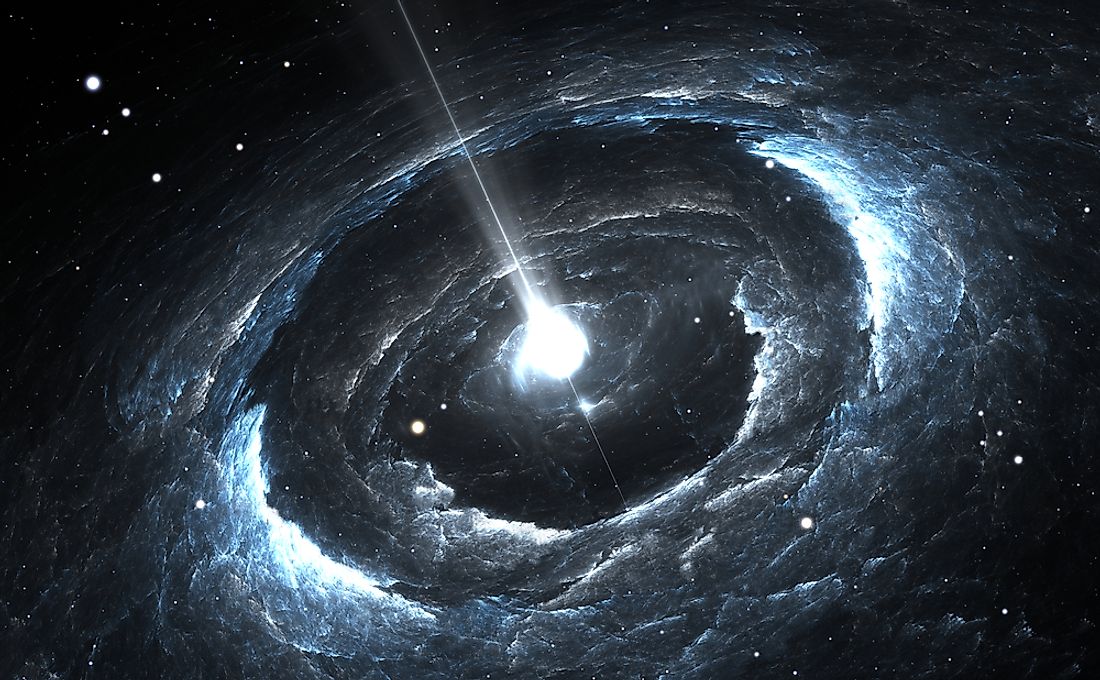What Is A Nuetron Star?

A neutron star is a stellar object having a mass equivalent to1.4 times the mass of the sun, though it is small having the size of a small city. Typically they have a diameter of about 12.4 miles, implying that they are so dense, that on earth one teaspoonful would weigh upwards of billions of tons. As a result of its tiny size and massive density, they possess extremely high gravitational force equivalent to 2x1011 times the gravity of the earth. Neutron stars also have the strongest magnetic fields which could be a billion or even trillion times stronger than any magnetic fields experienced on earth. The gravity is so strong on the neutron stars that they can significantly bend the radiation from the star in what the astronomer refer to as gravitational lensing. The bending could be so huge that the astronomers can observe the back side of the neutron star.
How Are Neutron Stars Formed?
Neutron stars have their origin from other bigger star, which could have a mass of 4 to 8 times the mass of our solar sun. When these enormous stars finish burning out their nuclear energy, they experience supernova explosion which blows off the outer layer of the star, and the inner core collapses into itself because of the gravity. The collapse is so enormous that the electrons and the protons combine to form neutrons and that is how they get their name the “Neutron Star.” Neutrons stars are remnants of the supernova and could appear as isolated stellar objects or as part of a binary system with other stars or neutron stars. Astronomers can establish the mass of a neutron when they are in a binary system. The power of the supernova that gives rise to the neutron star could give the Neutron star a rotational spin of up to 43,000 times per minute. The speed could slow down over time.
Structure Of Neutron Stars
The structure of a neutron star typically has four key layers. It has an outer crust which starts from the surfaces and rising to some few miles. This layer is made up of free electrons and atomic nuclei. The density of this zone is approximately one ton for every cubic centimeter. The inner crust is the next layer, where free neutrons, free electrons, and atomic nuclei mix to create a dense solid layer. Outer core is another layer lying deeper and it is in liquid state composed of protons, neutrons, muons, and free electrons co-existing together. Below the outer core is the inner core, which is a mysterious region and the particles in this zone, behave unpredictably. The density at the inner core is so enormous so that describing the interaction between the particles is problematic because knowledge on strong forces is limited to such densities.
Encounter With Neutron Stars
The neutron star has extremely strong magnetic fields that could be several billions the strength of magnetic field on earth. It is estimated that if such a magnetar passes closer to the earth at a distance of about 100,000 miles away, it will wipe out data on every credit card on the planet. However, none of the neutron stars is that close. In 2004, one such magnetar experienced an amazing outburst showing one of the brightest objects ever witnessed in the sky. The phenomena caused a disturbance in our Earth’s ionosphere, which was recorded throughout the world. It is estimated it was located 50,000 light years away.
Examples Of Neutron Stars
Currently, there are approximately 2,000 known neutron stars in the Milky Way. The nearest neutron star is the PSR J0108-1431 that is 424 light years away from the earth and was discovered in 1994. There is the LGM-1 which was the first recognized neutron star in 1967. There is the PSR B1257+12 which is a neutron star that has planets and it is located more than 2,300 light years away. Others worth a mention are the SWIFT J1756.9-2508, the PSR B1509-58, the PSR J0348+0432 which is the biggest neutron star ever recorded, it was discovered in 2007 by the Green Bank Telescope











